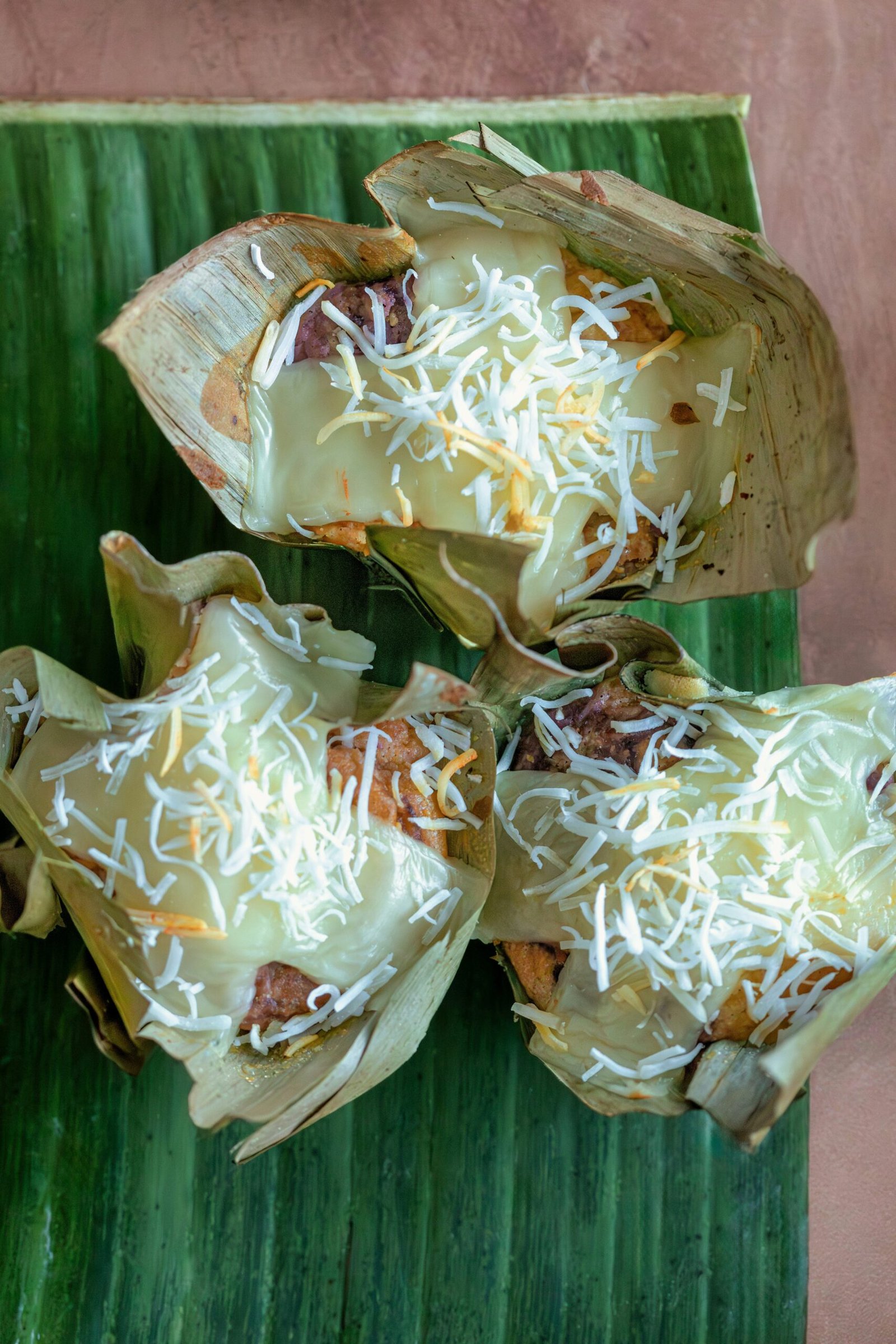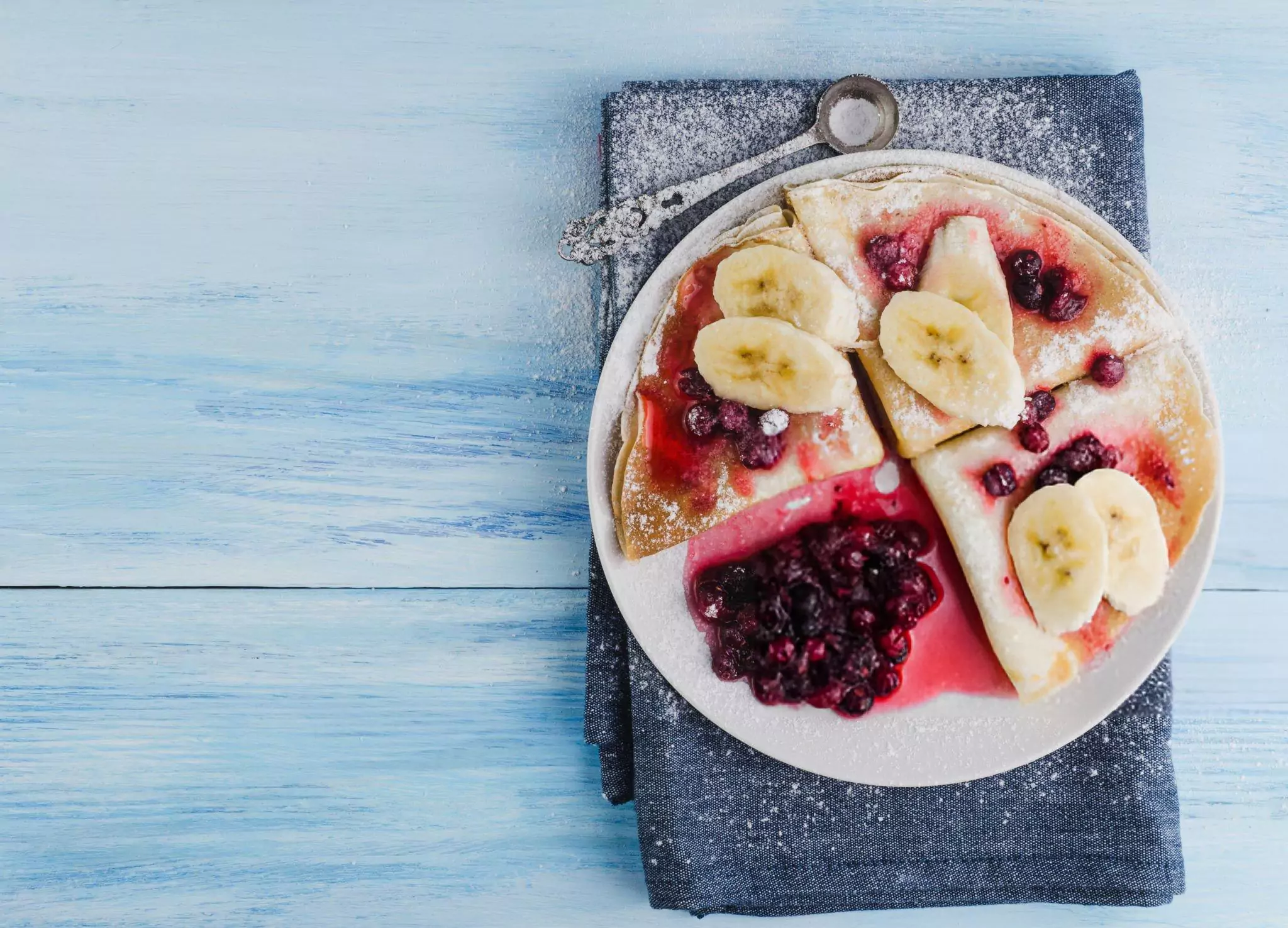Introduction to One-Pot Meals
In today’s fast-paced world, one-pot meals have emerged as a popular solution for home cooks seeking convenience without sacrificing flavor. One-pot meals are exactly what the name implies; they consist of recipes that require only a single pot or pan for preparation. This method not only simplifies the cooking process but also considerably reduces the time spent on clean-up, making it an ideal choice for busy individuals and families alike.
The rising popularity of one-pot meals is attributed to several factors. Firstly, they save time and effort in meal preparation. With just one vessel to worry about, cooks can enjoy a streamlined cooking experience. This is particularly beneficial for those who may feel overwhelmed by elaborate multi-step recipes, where various pans and utensils are used. Instead, one-pot meals allow for a more organized kitchen environment, promoting ease and efficiency.
Additionally, these meals typically involve combining all ingredients in a single pot, allowing flavors to meld beautifully during the cooking process. Whether it is a hearty stew, a creamy pasta, or a flavorful rice dish, one-pot meals deliver satisfying results with minimal hassle. This cooking method encourages creativity, as cooks can effortlessly experiment with different ingredients while maintaining a balance of flavors.
Moreover, one-pot recipes are often adaptable to various dietary preferences, enabling the inclusion of vegetables, proteins, or grains based on individual tastes. As many people strive for healthier eating habits, one-pot meals can be an excellent way to incorporate nutritious ingredients into daily diets. The accessibility and versatility of one-pot meals undoubtedly contribute to their growing affection among home cooks.
Benefits of One-Pot Meals
One-pot meals have gained significant popularity in recent years, thanks to their numerous advantages that cater to the needs of modern-day cooking. One of the most significant benefits of one-pot meals is the minimal cleanup required. With all ingredients cooked in a single vessel, the amount of cookware used is drastically reduced. This is particularly beneficial for busy families after a long day, as it means less time spent washing dishes and more time enjoying the meal together.
In addition to saving time on cleanup, one-pot meals are renowned for their capacity to streamline the cooking process itself. Preparing a complete meal in just one pot allows for more efficient use of time in the kitchen. Ingredients can often be added sequentially, which allows flavors to meld together beautifully. The result is a dish that is not only simpler to prepare but often richer in taste, thanks to the layering of flavors and the infusion of spices and seasonings throughout the cooking process.
Moreover, one-pot meals enhance nutrition by encouraging the inclusion of a variety of food groups. By incorporating proteins, vegetables, and grains into a single dish, families can enjoy balanced meals that are both satisfying and healthy. Additionally, the time-saving nature of these meals makes it easier to prepare home-cooked dishes on busy weeknights, promoting better eating habits compared to reliance on takeout or pre-packaged foods.
Ultimately, one-pot meals serve as a convenient solution for those juggling hectic schedules, making them an ideal choice for weeknight dinners. Their ability to combine flavor, nutrition, and simplicity makes one-pot recipes not only appealing but also a valuable addition to any family’s culinary repertoire.
Classic Beef Stew: A Hearty One-Pot Recipe
One-pot meals are a perfect solution for any home cook looking to prepare a satisfying dish with minimal cleanup. A classic beef stew exemplifies this concept brilliantly. The art of crafting a rich and hearty beef stew begins with selecting the right cuts of beef. For optimal flavor and tenderness, consider using chuck roast or brisket. These cuts contain a higher fat content and connective tissues, which break down during the slow cooking process, resulting in a melt-in-your-mouth texture.
Another vital step in creating a flavorful beef stew is the sautéing process. Before adding the liquid ingredients, it is essential to brown the beef in the pot. This step not only enhances the dish’s overall flavor but also adds depth through the Maillard reaction, which caramelizes the meat’s surface. As the beef develops a golden-brown crust, don’t hesitate to deglaze the pot with a splash of broth or wine, scraping up any flavorful bits stuck to the bottom.
After the sautéing is complete, it’s time to integrate a selection of aromatics and vegetables. Classic options include onions, garlic, carrots, and potatoes, all of whom contribute to the stew’s savory base. Pour in broth or stock, and don’t forget to season your stew with herbs like thyme or bay leaves for added aroma. Once everything is combined, bring it to a gentle simmer. The beauty of this one-pot meal is that it can be left to cook on the stove or moved to an oven for an even more controlled cooking environment.
Customization is another appealing aspect of a beef stew. Add different vegetables, such as green beans or peas, or spice it up with a splash of Worcestershire sauce or a hint of chili powder. The possibilities are truly endless. This flexibility allows you to adjust the stew to your palate while maintaining its comforting essence. In conclusion, a classic beef stew is not just a simple one-pot meal; it represents warmth and tradition, ready to be enjoyed by family and friends alike.
Creamy Mushroom Pasta: Quick and Flavorful
One-pot meals stand out for their convenience and the ability to deliver hearty flavors with minimal cleanup. Creamy mushroom pasta is a prime example of this, providing a delightful blend of textures and tastes that can be prepared in mere minutes. The fundamental ingredients include pasta, a variety of fresh mushrooms, cream, and seasonings, all cooked together for an easy and satisfying dinner.
When selecting mushrooms for this recipe, consider using a mix of varieties such as cremini, shiitake, and button mushrooms. Each type brings its unique flavor profile to the dish, enhancing the overall taste. For the pasta, short shapes like penne or fusilli work best, as they allow the creamy sauce to cling to the noodles. Alternatively, spaghetti can also be utilized for those who prefer a long pasta option. A key step in achieving the perfect creaminess is to ensure that the pasta cooks directly in the sauce, absorbing the flavorful liquid and resulting in a creamy texture that harmonizes with the mushrooms.
To add extra nutrition and flavor, it is beneficial to incorporate additional vegetables into your creamy mushroom pasta. Spinach, for instance, wilts beautifully, while cherry tomatoes offer a pop of color and sweetness. Simply sauté the mushrooms until tender, then mix in your chosen vegetables and allow them to cook down slightly before adding the pasta and cream. Remember to season generously with salt, pepper, and fresh herbs, such as parsley or thyme, to enhance the dish’s aromatic qualities.
This creamy mushroom pasta not only showcases the joys of one-pot cooking but also serves as a versatile base that can be tailored to personal preferences. The incorporation of various ingredients ensures that every bite is as flavorsome as the last, making it a go-to recipe for busy weeknights or special gatherings.
Spicy Chickpea Curry: A Vegan Delight
One of the standout recipes in the realm of one-pot meals is the spicy chickpea curry, a dish that marries flavor, health, and simplicity. Chickpeas, also known as garbanzo beans, are a fantastic source of plant-based protein and fiber, making them a nutritious base for any meal. This vegan delight is not only rich in taste but also quick to prepare, making it ideal for busy weeknights.
The heart of a great spicy chickpea curry lies in its spices. Essential spices such as cumin, coriander, turmeric, and garam masala contribute not only to the flavor profile but also to the health benefits of the dish. Cumin, for example, is renowned for aiding digestion, while turmeric contains curcumin, a compound known for its anti-inflammatory properties. When these spices are combined, they create a robust and aromatic base that elevates the entire dish.
To achieve the perfect consistency, starting with sautéed onions and garlic is recommended. This technique enhances the aromatic qualities of the meal. After the onions have turned golden, introduce the spices and let them bloom, releasing their essential oils. Next, add canned or cooked chickpeas, alongside diced tomatoes and coconut milk, which will add creaminess and depth. Allow the curry to simmer, enabling the flavors to meld beautifully.
For serving, consider pairing your spicy chickpea curry with fluffy rice or warm, crusty bread. Brown rice offers a wholesome complement, while naan or pita can be perfect for scooping up the curry, adding to the communal aspect of the meal. With this recipe, creating a hearty, plant-based delight in just one pot is achievable, showcasing the effortless pleasure of vegan cooking.
Easy One-Pot Recipes for Busy Nights
For those evenings when time is of the essence, easy one-pot recipes can be a lifesaver, offering a range of delicious dinner ideas that require minimal effort. One such option is the vegetable stir-fry, which can be prepared in under 30 minutes. By utilizing a medley of fresh vegetables like bell peppers, broccoli, and snap peas, this dish can be easily customized. A simple stir-fry sauce made from soy sauce, ginger, and garlic elevates the flavors, and the meal can be served over steamed rice or noodles for a complete dinner.
Another quick dinner choice is shrimp paella, a delightful twist on the traditional Spanish dish. This one-pot meal combines succulent shrimp with rice, saffron, and a variety of vegetables such as peas and tomatoes. The key to this recipe is to ensure that the rice absorbs the fragrant broth, resulting in a rich and satisfying meal. In just about 30 to 40 minutes, you can enjoy a flavorful experience that brings the taste of the Mediterranean right to your kitchen.
For those who prefer a satisfying, hearty option, the chicken fajita skillet is an excellent choice. By cooking chicken strips alongside onions and bell peppers, this dish results in a wonderful mix of flavors and textures. Adding spices such as cumin and chili powder enhances the taste, and it can be served with tortillas, making it a versatile meal. With minimal cleanup involved, this recipe is not only convenient but also incredibly satisfying, perfect for busy weeknights.
Each of these easy one-pot recipes demonstrates that quick preparation does not have to compromise taste. They serve as fantastic inspiration for anyone seeking variety in their dinner options while ensuring a delicious and hassle-free cooking experience.
One-Pan Meal Tips for Busy Nights
For those juggling hectic schedules, one-pan meals can provide a practical solution to mealtime dilemmas. The key to maximizing the efficiency of these meals lies in smart planning and strategic preparation. Here are several practical tips designed to streamline the cooking process, allowing for stress-free evenings.
First and foremost, effective meal planning can be a game-changer. Allocate a specific day each week to plan your meals and create a shopping list that contains all the necessary ingredients. This forward-thinking approach minimizes last-minute scrambles and reduces the chances of forgetting crucial items, ensuring you have everything on hand for your one-pan recipes. In addition, pre-centralizing ingredients that complement multiple dishes can save time and effort throughout the week.
Meal prep is another critical component of achieving success with one-pan meals. On designated meal prep days, consider chopping vegetables, marinating proteins, or cooking grains to have them ready for quick assembly during busy nights. Using clear and labeled storage containers can also help keep organized ingredients easily accessible, eliminating time lost rummaging through the refrigerator or pantry.
Timing is also important when it comes to cooking. Select recipes that align with your available cooking time and remember that many one-pan meals can be prepared in 30 minutes or less. Focus on meals that allow the oven or stove to do most of the work while you attend to other tasks, promoting a productive atmosphere in your kitchen. Remember that utilizing frozen vegetables can help save time without compromising nutrition.
Lastly, keep a well-stocked pantry. Ingredients such as canned beans, pasta, grains, and frozen proteins can serve as substantial base components for various one-pan meals. Having these staples readily available ensures that even on the busiest days, you can whip up a delicious meal in no time.
Storing and Reheating One-Pot Meals
Proper storage and reheating techniques are essential components in enjoying one-pot meals beyond their initial serving. Following food safety guidelines not only helps maintain the integrity of the meal but also prevents any potential health risks associated with improper handling. Always aim to refrigerate leftovers within two hours after cooking to ensure freshness and safety. If you anticipate that the meal will not be consumed within three to four days, consider freezing portions for later use.
When it comes to storage containers, opt for airtight, BPA-free plastic or glass containers that are microwave safe. These containers are effective in preserving the flavor and texture of your one-pot meals. It is advisable to package the meals in single-serving sizes, as this facilitates quick reheating and reduces the need to repeatedly expose the remaining food to room temperature, which can lead to spoilage.
For reheating one-pot meals, there are several techniques to consider that will help retain the delightful flavors and appealing textures. The microwave is a popular choice for its convenience and speed; however, it is crucial to stir the meal halfway through reheating to ensure even warmth throughout. Additionally, cover the meal loosely with a microwave-safe lid or wrap to trap moisture and prevent drying out.
If you prefer stovetop reheating, place the one-pot meal in a pan over low to medium heat, adding a splash of water or broth to restore moisture. Cover the pan with a lid to allow the meal to heat evenly and thoroughly. For those who have frozen portions, it is recommended to thaw them in the refrigerator overnight for best results before reheating. Utilizing these storage and reheating methods will significantly enhance your experience with one-pot meals, ensuring they remain delightful and satisfying for future consumption.
One-Pot Meal Variations and Customizations
One-pot meals offer remarkable versatility, enabling home cooks to tailor dishes according to individual preferences and needs. One way to achieve this is through variations in cuisines. By incorporating elements from different cultural backgrounds, one can create unique flavors. For instance, adding spices characteristic of Indian cuisine—such as cumin, coriander, or turmeric—can transform a simple rice dish into a rich and fragrant biryani. Similarly, shortcuts like utilizing canned tomatoes and fresh basil can allow for a swift Italian-inspired meal.
Moreover, seasonal ingredients hold immense potential for enhancing one-pot recipes. Utilizing fresh produce during its peak not only boosts flavor but also elevates nutritional value. For example, a spring vegetable one-pot meal may feature asparagus, peas, and new potatoes, while a hearty autumn dish could include root vegetables like carrots and sweet potatoes. By embracing the changing seasons, you can perpetually rejuvenate your meals, ensuring they never become monotonous.
Dietary restrictions are another critical factor when customizing one-pot meals. For those following a vegetarian or vegan lifestyle, beans, lentils, and plant-based proteins can substitute meat, delivering ample satisfaction. Gluten-free individuals can use rice or quinoa as a base instead of pasta. Additionally, awareness regarding allergens can prompt substituting certain ingredients to create inclusive meals. For instance, nut allergies can be addressed by replacing nut-based creams with coconut milk or avocado, maintaining creaminess without sacrificing flavor.
Overall, the adaptability of one-pot meals enhances both their appeal and practicality, allowing everyone to enjoy simple, delicious, and nutritious dishes that reflect their unique tastes and dietary requirements.
Conclusion: Embrace the One-Pot Lifestyle
As we have explored throughout this guide, one-pot meals present a harmonious blend of simplicity, flavor, and efficiency. For busy individuals and families alike, the adoption of a one-pot cooking style can significantly ease the burdens of meal preparation and cleanup. With just a single pot or pan, a wide array of delectable dishes can be created, minimizing the time spent in the kitchen and maximizing enjoyment around the dining table.
In implementing one-pot recipes, the versatility of ingredients truly shines. Whether you prefer hearty stews, comforting pasta dishes, or vibrant vegetable medleys, the possibilities are vast. Each recipe provides an opportunity to experiment with different flavors, textures, and cuisines, ultimately allowing you to tailor meals to your family’s preferences. Moreover, the time-saving aspect cannot be overstated; fewer dishes to wash translates to more time to relax or engage in other activities after a long day. One-pot meals stand out not only for their ease of preparation but also for their ability to deliver delicious, home-cooked meals with minimal effort.
By embracing the one-pot lifestyle, you are choosing to enhance both your culinary experience and quality of life. The simplicity of cooking in a single vessel removes the intimidation that often accompanies elaborate meal preparation. Instead, it paves the way for creativity in the kitchen while fostering meaningful moments shared with loved ones. We encourage you to try out the various recipes and tips provided in this guide, and to explore the joy of one-pot cooking for yourself. As you embark on this culinary journey, you will likely find joy in the vibrant flavors and comforting aromas of meals that can be executed easily and efficiently.










